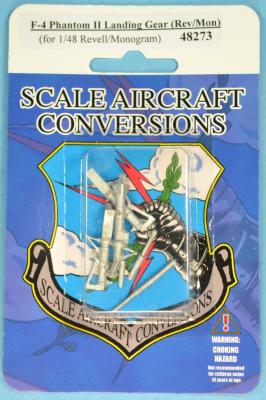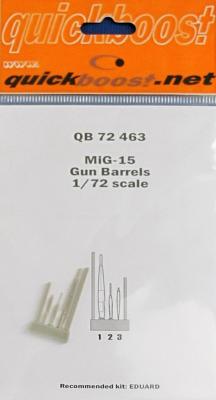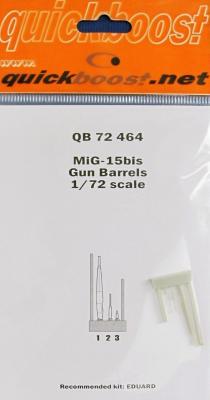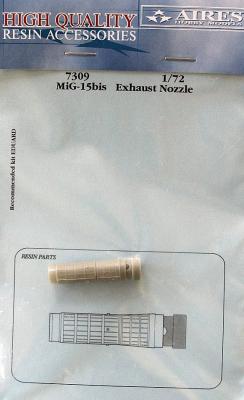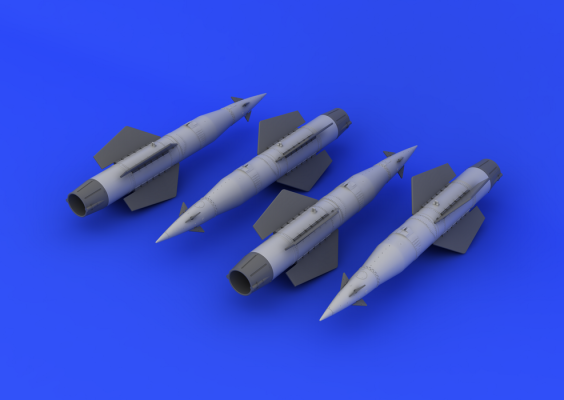The McDonnell Douglas F-4 Phantom II was developed for the US Navy as a two-seat, twin-engine, supersonic jet fighter, entering service in 1960. It was eventually adopted for use by the US Marine Corps and the US Air Force. Capable of speeds over Mach 2, the Phantom could be armed with air-to-air missiles, air-to-ground missiles, a variety of bombs, and eventually an M61 Vulcan rotary cannon. Setting records for performance from the beginning, it held both the absolute speed record and the absolute altitude record for a time. Used extensively during the Vietnam War, the F-4 became the primary air superiority fighter for both the Navy and Air Force. The Phantom served in the Gulf War in 1991 in reconnaissance and Wild Weasel roles, and was eventually retired in 1996.
Welcome to the IPMS/USA Reviews site!
Introduction: The primary organization of the IPMS/USA Review website is by IPMS/USA National Contest Class. Within each Class there are sub-menus by kits, decals, books, etc. The Miscellaneous Class is for items that are not class specific or that cross two or more classes.
IPMS/USA Members: We encourage you to submit reviews, both here and to the Journal. To volunteer for membership in the IPMS/USA "Reviewers Corps" and submit your own reviews, please read the Guidelines For Submitting Product Reviews.
Manufacturers, publishers, and other industry members: IPMS/USA is pleased to offer your company the opportunity for product reviews. All product reviews are performed by IPMS/USA members, and are posted in the publicly-accessible section of our website. With very few exceptions, we perform full build reviews of new kit releases, aftermarket products, and supplies. If you would care to provide product samples for review, please contact John Noack, IPMS/USA 1st VP.
To learn more about IPMS/USA, please see our About Us page.
One of the differences between the MiG-15 and the MiG-15bis is the gun configuration in the nose. It is not readily noticeable, but there are differences in the 23mm cannons and their fairings.
The MiG-15 was equipped with one N-37 37mm cannon and two NS-23 23mm cannons in a drop down tray on the bottom of the nose fairing. This was the standard configuration until improvements were made in the MiG-15bis.
Eduard’s new MiG-15 and MiG-15bis kits in 1/72nd scale are great little kits and are very accurate. Even though the kit gun barrels, parts C3, C12 and C32 are very well done, Quickboost has provided us with some exquisite resin replacements with no mold seam to clean up and the end of the 37mm cannon barrel drilled out. These barrels are direct replacements for the previously mentioned kit parts.
My thanks to Aires and IPMS for the review sample.
One of the differences between the MiG-15 and the MiG-15bis, in addition to a newer and more powerful engine, is the gun configuration in the nose. It is not readily noticeable, but there are differences in the 23mm cannons and their fairings.
The MiG-15 was equipped with one N-37 37mm cannon and two NS-23 23mm cannons in a drop down tray on the bottom of the nose fairing. This was the standard configuration until improvements were made in the MiG-15bis. The MiG-15bis received two NR-23 cannons, which had a higher rate of fire and an improved ammunition system. The cowling also changed with bulged ejection chutes. The fairings on the newer guns were also shorter than their predecessors.
Eduard's kit of the Mig-15 is a hit and has very nice detail and builds into a beautiful replica. One of the areas all models have issues with is the exhaust. It is virtually impossible to make it in one piece and it is hard to get seams out if it is multiple pieces and the detail is not as crisp due to molding limitations.
Aires to the rescue with a quick replacement resin exhaust. The part is molded seamlessly as a single piece. Cut off the pour stub and use the kit fan blades and you can paint and glue in place with no issues. Detail is excellent on the entire piece and it is definitely a worthy addition to an already excellent kit.
Definitely recommended. My thanks to Aires and IPMS USA for the review sample.
Eduard continues its releases of highly detailed missiles with an AGM-12C Bullpup. The Bullpup was the first mass produced air-to-surface guided missile and entered production in 1965. The missile was carried by F-4’s and F-105’s and, unfortunately, it was not particularly effective. Also note that the “C” version would not necessarily be appropriate to earlier aircraft. In any case, check your references.
The set comes with part to produce four complete missiles. This includes forty resin parts and a set of decals. 32 of the parts are perfectly cast fins- four main fins and four small fins. The main body and engine are two separate parts. Casting is prefect and very well defined.











